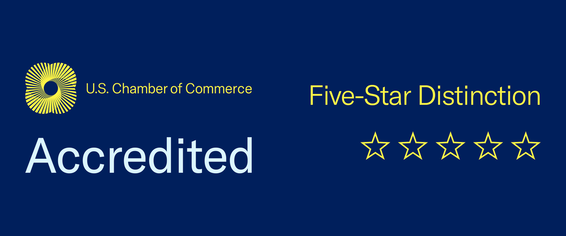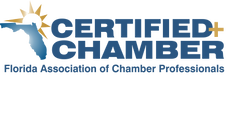|
As part of an end-of-year pandemic relief package, Congress has passed several changes to the Paycheck Protection Program (PPP) and created a “Second Draw” PPP for small businesses who have exhausted their initial loan. Other changes impact eligibility for initial PPP loans, the loan forgiveness process, and the tax treatment of PPP loans. In addition to business relief, they also extended the federal unemployment subsidy of $300 for 11 weeks as well as issuing individual stimulus checks of $600 for individuals. This post tells you we what we know about the following questions: 1. How do the new changes impact my existing PPP loan? 2. How does this help me if I exhausted my initial PPP loan? 3. What if I never received a PPP loan but want to apply? 4. What other changes were made to programs that could help my business? ______________________________________________ 1. How Do New Changes Impact My Existing PPP Loan?
Tax Treatment: The new law overturns the IRS ruling and provides that regular business expenses paid for with PPP loan proceeds shall be deductible for tax purposes (applies to past and future loans). Expanded List of Expenses Qualifying for Forgiveness: The list of expenses that PPP funds can be used for that qualify for loan forgiveness has been expanded to include: “operations expenses” defined as payments for business software and cloud computing services and other human resources and accounting needs that facilitate business operations; “supplier costs” defined as payments to a supplier for goods that are essential to the operations of the borrower pursuant to a contract or purchase order in effect before the PPP loan is disbursed or with respect to perishable goods, in effect at any time; “worker protection expenses” defined as operating or capital expenditures to comply with public health guidance related to COVID-19, including things like drive-through windows and sneeze guards and the purchase of personal protective equipment (PPE); and “covered property damage costs” defined as costs related to property damage or looting due to public disturbances in 2020 that are not covered by insurance or other compensation. Remember: It is still the case that not more than 40% of the forgiven amount can be for non-payroll costs, which may limit how much of your loan can be forgiven. Loan Forgiveness Reduction: If you also received an EIDL grant, your PPP loan forgiveness will no longer be reduced by the amount of the grant. Loan Forgiveness Period: The period for which expenses count toward loan forgiveness will begin on the date of loan origination and end on a date of your choosing that is between 8 and 24 weeks after origination. Simplified Application: If your loan was for less than $150,000, there will be a simplified one-page application process for loan forgiveness. 2. I Exhausted My Initial PPP Loan, How Does This Help Me? The brand new “Second Draw” program is for small businesses, non-profits, sole proprietors, and independent contractors who have exhausted their initial PPP loan. The program will make new loans through March 31, 2021 or until the new funding is exhausted. Eligibility: You are eligible for a second draw loan if you have exhausted your first PPP loan and (1) you have less than 300 employees, and (2) you have experienced a greater than 25% reduction in gross receipts during the first, second, third, or fourth quarter in 2020 relative to the same quarter in 2019. Entities with significant ties to China are ineligible for a second draw loan. Loan Amount: The maximum loan amount is the average monthly payroll costs for the entity during the 12 months prior to the loan or, at the election of the borrower, 2019 multiplied by 2.5 (or 3.5 for employers in the accommodation and food service industry). Seasonal employers utilize average monthly payroll costs for a 12-week period between February 15, 2019 and February 15, 2020. A loan may not exceed $2 million. Loan Forgiveness: The amount of loan that can be forgiven is the lesser of:
Like original PPP loans, the amount of loan forgiveness can be reduced if the borrower has (1) reduced the number of employees or (2) employee salaries by more than 25%. However, the same safe harbors that apply to original PPP loans apply to Second Draw loans. Learn more about these Safe Harbors in the US Chamber's Guide for PPP Loan Forgiveness. 3. What If I Never Received a PPP Loan? For new PPP applicants, the loan process will largely remain the same (check out the US Chamber's original PPP Guide) with a few major changes:
4. Which Other Programs That May Help My Small Business Have Been Changed or Updated? Expanded Employee Retention Tax Credit: The new law significantly expands the employee retention tax credit beginning on January 1, 2021. The credit expires on June 30, 2021. The prior credit was 50% on $10,000 in qualified wages for the whole year (or a maximum of $5,000 per employee). The new credit is 70% on $10,000 in wages per quarter (or a maximum $14,000 per employee through June 30th). The new law also expands which employers are eligible. Prior to the new law, the employee retention tax credit applied only to an employer who experienced a decline in gross receipts of more than 50% in a quarter compared to the same quarter in 2019. Eligibility is now expanded to include employers who experienced a decline of more than 20%. In addition, the employee cap under which it is easier to claim the tax credit has been raised to 500 employees from 100 employees. Now, employers with 500 or fewer employees can claim the credit for wages to paid to employees irrespective of whether the employee is providing services. Employers can now also receive both the Employee Retention Tax Credit and a PPP loan, just not to cover the same payroll expenses. Remember: This is a refundable tax credit. See the US Chamber’s original Guide to the ERTC for more information. EIDL Grants: The new law reopens the $10,000 EIDL Grant program. Priority for the full amount of the EIDL grant will be given to small businesses with less than 300 employees, located in low-income neighborhoods, who have experienced a 30% reduction in gross receipts during any 8-week period between March 2, and December 31, 2020 compared to a comparable 8-week period before March 2. If you meet this description and received a grant that is less than $10,000 you can reapply to receive the difference. Grants for Shuttered Venue Operators: The law creates a new $15 billion grant program for eligible live venue operators or promoters, theatrical producers, live performing arts organization operators, museum operators, motion picture theatre operators, or talent representatives that have experienced at least a 25% drop in revenue. Grants are equal to the lesser of $10 million or 45% of gross earned revenue in 2019. Grants must be used for specified expenses such as payroll costs, rent, utilities, and personal protective equipment. If you receive a grant you may not apply for a new PPP loan. SBA Loan Debt Forgiveness: The new law resumes the government payment of monthly principal and interest on small business loans guaranteed by the SBA under the 7(a), 504, and Microloan programs. Borrowers with loans approved by the SBA prior to the CARES Act will receive an additional three months of payments beginning in February of 2021. Those payments will be capped at $9,000 per borrower per month. After that, certain borrower will receive an additional five months of payments, including: borrowers with SBA microloans or 7(a) Community Advantage loans or borrowers with any 7(a) or 504 loan in hard hit sectors: educational services; arts, entertainment and recreation; food service and accommodation; support activities for mining, and oil and gas extraction; apparel manufacturing; clothing and clothing accessories stores; sporting goods, hobby, book and music stores; air transportation; transit and ground passenger transportation; scenic and sightseeing transportation; publishing industries; motion picture and sound recording; broadcasting; rental and leasing services; and personal and laundry services. New SBA loans made or approved between December 22, 2020 and September 30, 2021 will receive six months of government payment of principal and interest, also capped at $9,000 per month.
0 Comments
Your comment will be posted after it is approved.
Leave a Reply. |
Upcoming Events |
|


